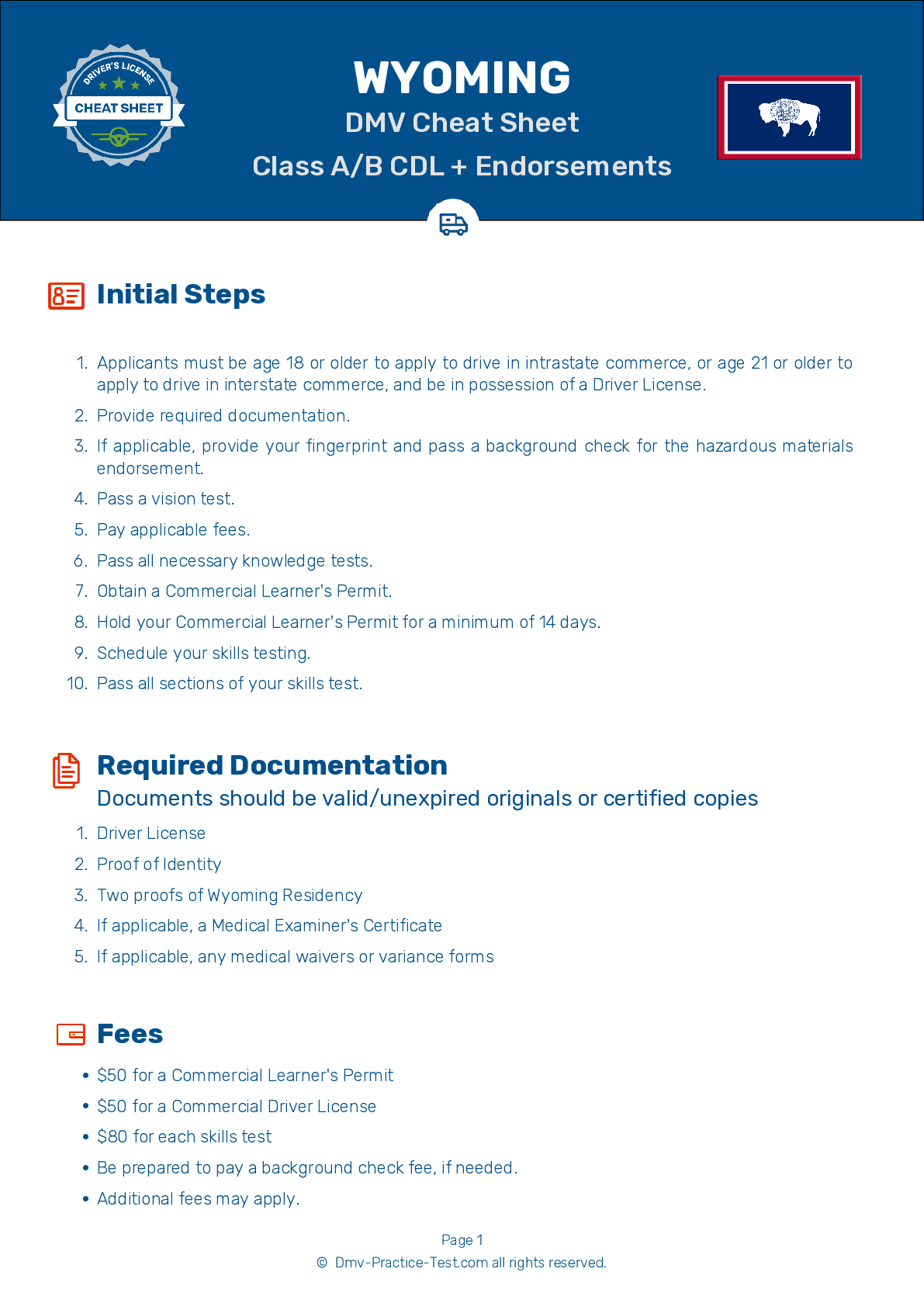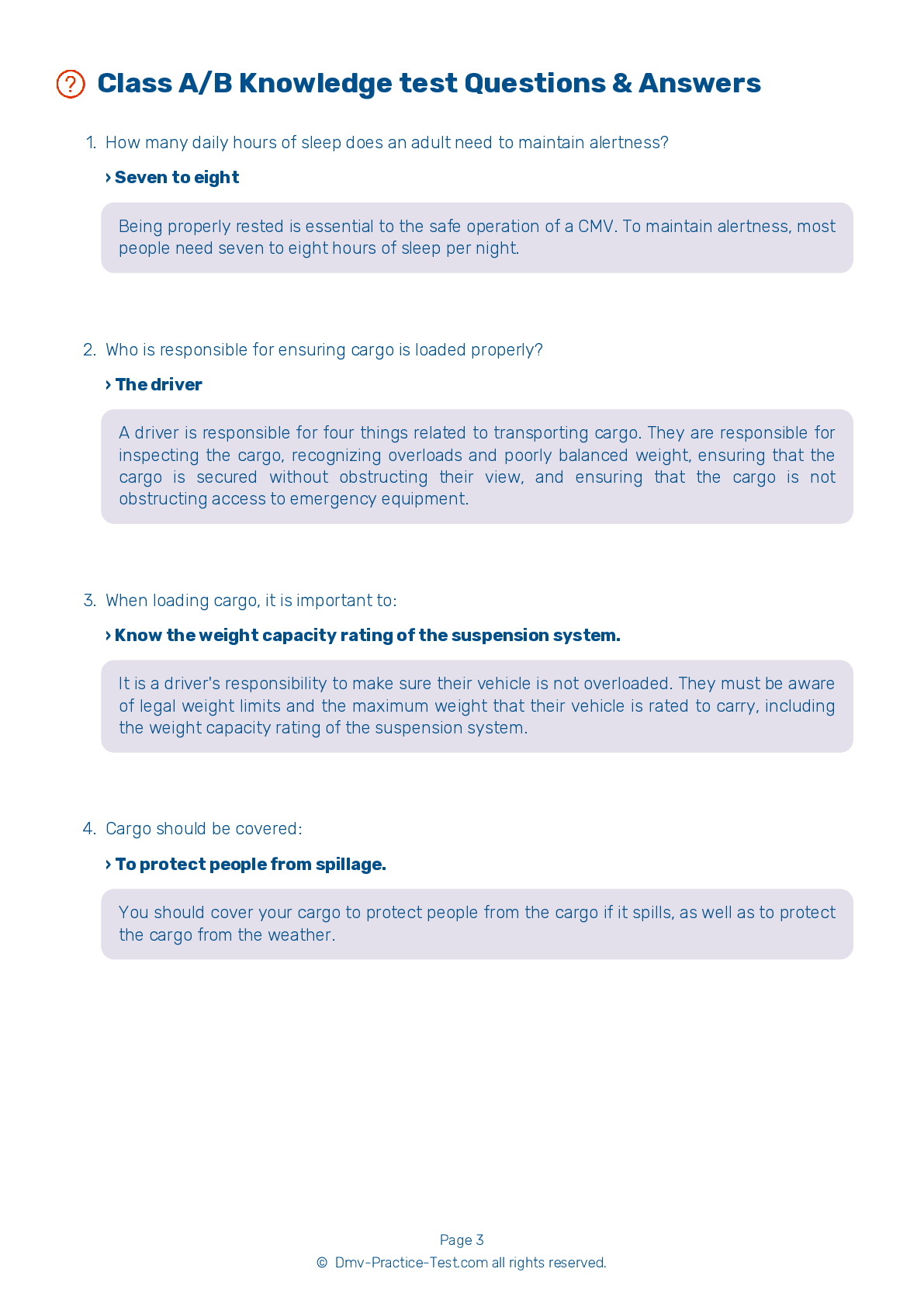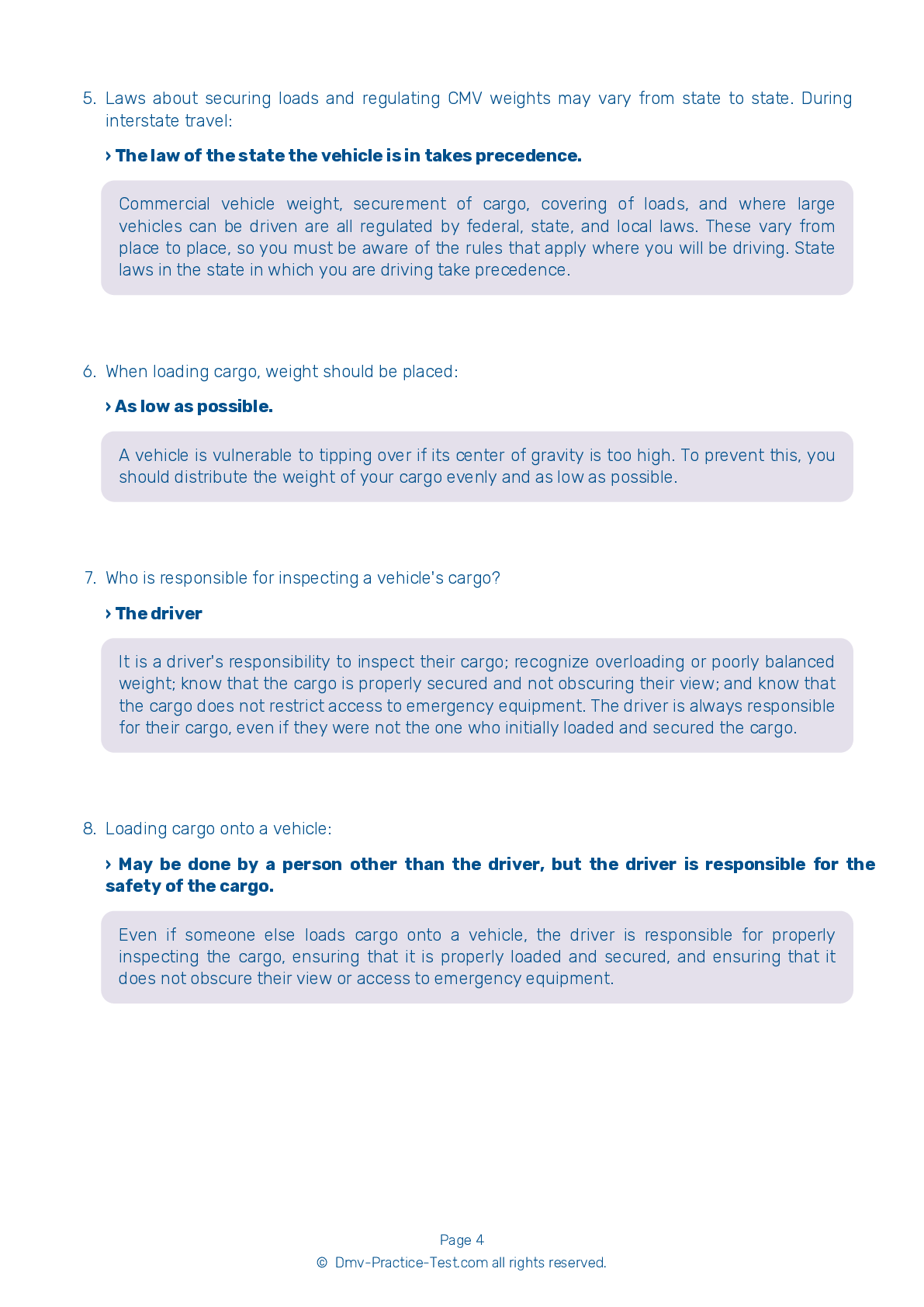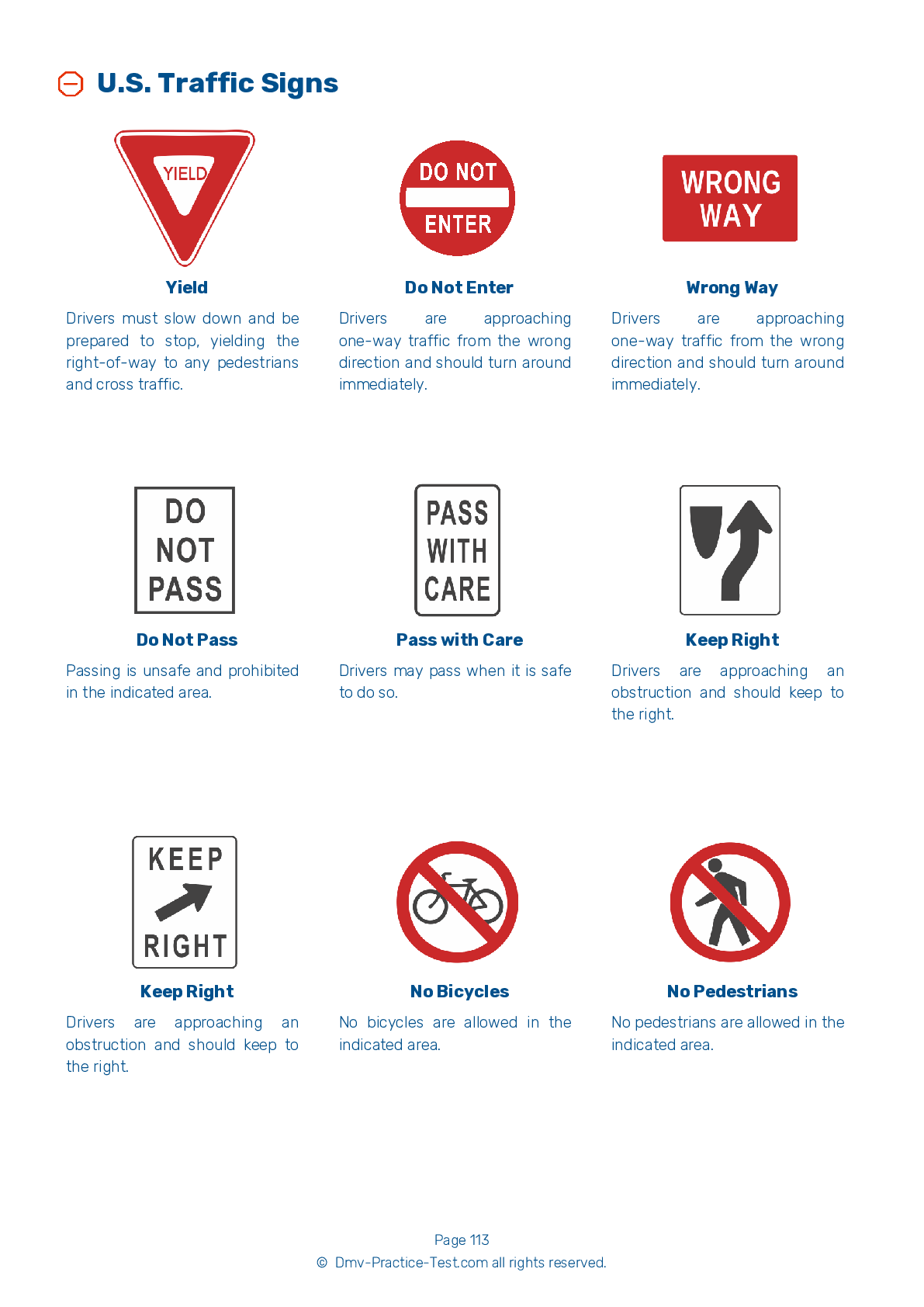Passenger Endorsement | Wyoming 2025 #2 Page 2 of 3
Train for FREE with our Wyoming CDL passenger endorsement practice test online. The official exam test consists of several obligatory parts, with all of them checking your knowledge of different blocks of road rules. If you need to obtain a WY DMV passenger endorsement in 2025, practice as much as possible. Free sample tests published on our website will help you check and improve your knowledge and boost your grades. Please bear in mind that DMV requirements for issuing a CDL permit with passenger endorsement may vary from state to state.
8 . If you are approaching a drawbridge that does not have a signal light or traffic control attendant, you should:
A bus should always stop at any drawbridge that is not controlled by a signal light or traffic control attendant. Stop at least 50 feet before the draw of the bridge, and make sure that it is completely closed before crossing.
9 . The standee line:
On a bus designed to carry standing passengers, no passengers may stand in front of the rear of the driver's seat. Any such bus must have a line on the floor, or some other marking, that indicates where passengers may not stand. This is called a standee line.
10 . A posted speed limit that is safe for cars:
Posted speed limits on roadways, especially through turns and curves, may be safe for cars but too fast for buses. Drivers of large vehicles should be aware of how fast their vehicle can safely be driven.
11 . What is a drawback of retarders?
A retarder is a device that helps to slow a vehicle, reducing the need for a driver to use the brakes. However, these devices can be noisy and are not permitted everywhere.
12 . If a bus leans toward the outside of a banked curve, the bus is:
If a bus leans to the outside when being driven on a banked curve, it is going too fast. Slow down when entering a curve.
13 . When changing lanes, you should:
Always check your mirrors and use the proper signal when changing lanes. Be sure there is enough space for your entire vehicle in the next lane before you begin moving.
14 . When inspecting the interior of a bus, you should:
When inspecting the interior of a bus, you must make sure that everything is safe and in proper working condition. Ensure that all seats are properly fastened to the bus and safe to be used by riders.
See the exact questions that will be on the 2025 Wyoming DMV exam.
99.2% of people who use the cheat sheet pass the FIRST TIME
Lillian MCcranie explains how our CDL study guide was helpful in passing the exam and recommends it to everyone.
Cameron tells us how he purchased the CDL exam, and found it to be a useful tool which helped him pass the exam and find a job.



